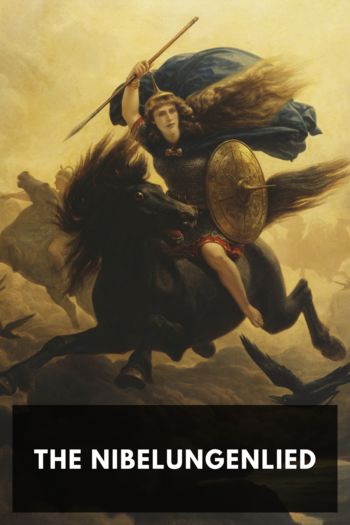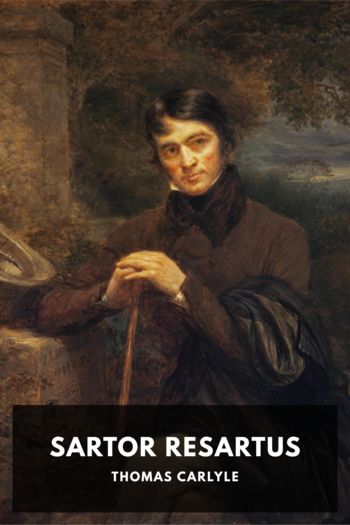The Nibelungenlied, - [best color ebook reader .txt] 📗

- Author: -
Book online «The Nibelungenlied, - [best color ebook reader .txt] 📗». Author -
So at least the translator and editor, who are jointly responsible, have thought; though, at the same time, they have been fully alive to the necessity of a close adherence to the text. They are of the opinion of Dryden, as expressed in the preface to his version of Ovid’s Epistles, that it is the business of a translator, as it is of a portrait painter, to make his work resemble the original. On this principle they have striven not to yield to the tempting idea—too often a delusion—that by sacrificing the letter they may preserve the spirit. On the contrary, they have thought that, in such a case as this, the letter and spirit are in a large measure inseparable. With, therefore, no small expenditure of trouble, they have tried, with what success the reader must judge, to reproduce in suitable English the matter, manner, and metre of the original.
With regard to the language, no futile attempt has been made by archaicisms to give the translation the appearance of an antique. The object has been to put English readers, as far as possible, in the same position as the German who reads the work in one of the several modern German versions. At the same time it is obvious that much of what forms the English of today is not a suitable vehicle for the primitive ideas and manners illustrated in the poem. The translators have therefore tried to avoid words of merely modern use, and to adhere to English which is familiar to everyone in the Bible, or in the older Ballad literature, and is, at the same time, not out of harmony with a work which places the reader in an atmosphere far removed from that of the Victorian era.
Some latitude must also be allowed in respect to the metre. The rhythmical system of the original depends on accent rather than on time or measure. Opinions may differ as to the amount of accent to be given to lines like the following, which is a nearly normal stanza:
Nu wáren oúch die géste ze róssen álle kómen.
vil mánic ríchiu tjóste durch súlde wárt genómen.
daz vélt begónde stoúben sám ob ál daz lánt
mit loúge wære enbrúnnen: da wúrden hélde wól bekánt.
To the ordinary ear they resemble iambics with a central caesura;—a measure familiar in ballad verse, and much used by Macaulay in his well-known “Lays.” This form accordingly has been adopted as the metrical equivalent; though, for the sake of euphony, the extra accent which characterizes the second half of every fourth line has been omitted in the translation. How far this method of rendering the original is justifiable the reader may determine by turning to the specimens given by Carlyle, and comparing it with his rougher versions.
It has been thought well to prefix to the volume this Essay of Carlyle’s, because, though it was written more than sixty years ago, when the subject had attracted but little attention, it gives in a sympathetic manner, yet in a style full of characteristic humour, an account of the relations between this poem and other German medieval rhymes, founded on kindred subjects. So far as concerns the authorship of the poem, as it now exists, nothing has been discovered since Carlyle wrote. It must, however, be obvious to any careful reader that the poem is not in its original form. The references to people and events, not accounted for in it, prove that it is based on earlier legends. The strange juxtaposition of ethical motives; the contrast of ideals, as shown in the characters of Hagen and Rüdeger; the mingling of historical personages of different dates, show that in its earliest form as a whole it must have been full of anachronisms, due to the fusion of different elements. These have to some extent been elucidated by the increased knowledge of Scandinavian literature. The Eddas and Sagas exhibit, in a different form, the ancient legends on which the various parts of the poem are based. In the Volsungasaga we have a key to the earlier history of Siegfried and Brunhild, to which, in the Nibelungenlied, only obscure reference is made. In the Thidreksaga we have the Scandinavian form of the widely-spread legend of Theodoric, differing little from the version found in the German epic. But inasmuch as the former, no less than the latter, is generally admitted to be of Teutonic origin, however much infused with Scandinavian mythology, we have not come much nearer to the ultimate sources of the mythical, as distinguished from the historical, elements of the story.
Lachmann, one of the earliest editors of the Nibelungenlied, went so far as to analyze it into twenty different legends, rejecting on various grounds more than one-third of what is here given. Between that phase and the last, it is evident that there are several stages in which the poem existed as a whole. It is known that, at the request of Bishop Pilgrim of Passau in the tenth century, the story was translated into Latin prose by Conrad, called “The Scribe,” and to him is attributed the inclusion of the name of the said bishop as that of an actor in events which, so far as they are historical, belong to the fifth century. After Conrad’s time there may have been several augmented German editions before the twelfth century, to which our version belongs. There are more than twenty extant MSS., of which, however, only three are regarded as having any independent authenticity. They are designated as “A,” “B,” and “C”; of which the first, used by Lachmann, is the shortest, but betrays fewest signs of deviation from an older and good version. “C,” on the contrary, is said to be considerably altered, from an earlier popular form, to suit the more courtly taste of a later period of culture. The remaining, “B”—a





Comments (0)